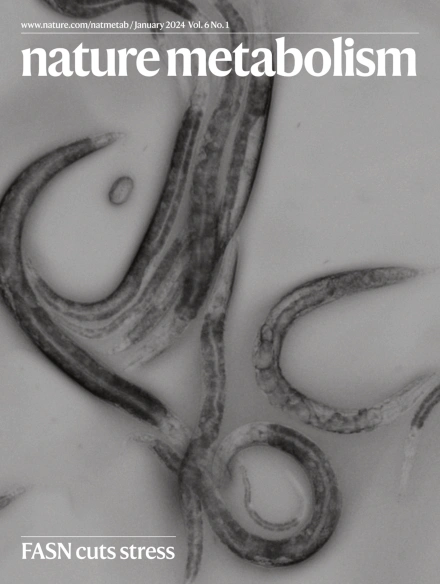DDHD2 provides a flux of saturated fatty acids for neuronal energy and function
IF 20.8
1区 医学
Q1 ENDOCRINOLOGY & METABOLISM
引用次数: 0
Abstract
Although fatty acids support mitochondrial ATP production in most tissues, neurons are believed to rely exclusively on glucose for energy. Here we show that genetic ablation of the triglyceride and phospholipid lipase Ddhd2 impairs mitochondrial respiration and ATP synthesis in cultured neurons, despite increased glycolysis. This defect arises from reduced levels of long-chain saturated free fatty acids, particularly myristic, palmitic and stearic acids, normally released in an activity-dependent manner by Ddhd2. Inhibition of mitochondrial fatty acid import in wild-type neurons similarly reduced mitochondrial respiration and ATP production. Saturated fatty acyl-coenzyme A treatment restored mitochondrial energy production in Ddhd2 knockout neurons. When provided in combination, these activated fatty acyl-CoA supplements also rescued defects in membrane trafficking, synaptic function and protein homeostasis. These findings uncover that neurons perform β-oxidation of endogenous long-chain free fatty acids to meet ATP demands and reveal a potential therapeutic strategy for hereditary spastic paraplegia 54 caused by DDHD2 mutations. Saber et al. show that the lipase DDHD2 provides endogenous saturated fatty acids to support fatty acid oxidation and energy production, proteostasis and membrane trafficking balance.

DDHD2为神经元的能量和功能提供饱和脂肪酸的通量。
虽然脂肪酸在大多数组织中支持线粒体ATP的产生,但神经元被认为完全依赖葡萄糖提供能量。本研究表明,尽管糖酵解增加,但甘油三酯和磷脂脂肪酶Ddhd2的基因消融会损害培养神经元的线粒体呼吸和ATP合成。这种缺陷源于长链饱和游离脂肪酸水平的降低,尤其是肉豆汁酸、棕榈酸和硬脂酸,这些脂肪酸通常由Ddhd2以活性依赖的方式释放。野生型神经元中线粒体脂肪酸输入的抑制同样减少了线粒体呼吸和ATP的产生。饱和脂肪酰基辅酶A处理恢复Ddhd2敲除神经元线粒体能量产生。当联合提供时,这些活化的脂肪酰基辅酶a补充剂还可以挽救膜运输,突触功能和蛋白质稳态的缺陷。这些发现揭示了神经元对内源性长链游离脂肪酸进行β-氧化以满足ATP需求,并揭示了由DDHD2突变引起的遗传性痉挛性截瘫54的潜在治疗策略。
本文章由计算机程序翻译,如有差异,请以英文原文为准。
求助全文
约1分钟内获得全文
求助全文
来源期刊

Nature metabolism
ENDOCRINOLOGY & METABOLISM-
CiteScore
27.50
自引率
2.40%
发文量
170
期刊介绍:
Nature Metabolism is a peer-reviewed scientific journal that covers a broad range of topics in metabolism research. It aims to advance the understanding of metabolic and homeostatic processes at a cellular and physiological level. The journal publishes research from various fields, including fundamental cell biology, basic biomedical and translational research, and integrative physiology. It focuses on how cellular metabolism affects cellular function, the physiology and homeostasis of organs and tissues, and the regulation of organismal energy homeostasis. It also investigates the molecular pathophysiology of metabolic diseases such as diabetes and obesity, as well as their treatment. Nature Metabolism follows the standards of other Nature-branded journals, with a dedicated team of professional editors, rigorous peer-review process, high standards of copy-editing and production, swift publication, and editorial independence. The journal has a high impact factor, has a certain influence in the international area, and is deeply concerned and cited by the majority of scholars.
 求助内容:
求助内容: 应助结果提醒方式:
应助结果提醒方式:


